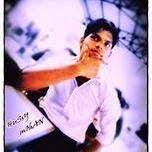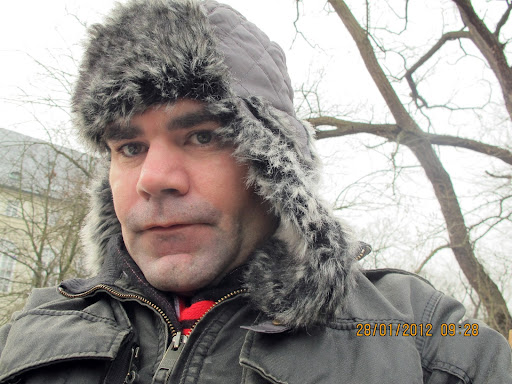David M Mohan
age ~71
from Shawnee, KS
- Also known as:
-
- Dave Mohan
- David Lavania
- Mohan W David
- Dave Mehen
David Mohan Phones & Addresses
- Shawnee, KS
- Pompano Beach, FL
- Baltimore, MD
- Placida, FL
- Overland Park, KS
- Halfmoon, NY
Resumes

David Mohan
view source
David Mohan
view sourceName / Title
Company / Classification
Phones & Addresses
Director
KARATE MASTERS MIAMI, INC
2651-55 N Hiatus Rd, Hollywood, FL 33026
2651 N Hiatus Rd, Hollywood, FL 33026
914 Milford Ml Rd, Pikesville, MD 21208
2651 N Hiatus Rd, Hollywood, FL 33026
914 Milford Ml Rd, Pikesville, MD 21208
Us Patents
-
Handset Based Dynamic Parental Controls
view source -
US Patent:7869792, Jan 11, 2011
-
Filed:Mar 13, 2007
-
Appl. No.:11/717758
-
Inventors:Tong Zhou - Overland Park KS, US
David Mohan - Overland Park KS, US
Baoquan Zhang - Overland Park KS, US -
Assignee:Sprint Spectrum L.P. - Overland Park KS
-
International Classification:H04M 1/66
H04W 12/00 -
US Classification:455411, 455519, 4554143, 455445, 455420
-
Abstract:A parent mobile station is provided that enables real-time parental control over communications with an associated child mobile station. The parent mobile station receives notification of attempted inbound and outbound calls with third parties to and from the child mobile station, or of requests from the child mobile station to retrieve content from a content provider. In response to the notifications, the parent mobile station determines whether or not to permit the inbound and outbound calls or the retrieval of content. If permitted, communications with the child mobile station are routed through the parent mobile station, which itself communicates over a wireless telecommunications network. If not permitted, the parent mobile station does not relay such communications. The child mobile station preferably communicates with the parent mobile station using a wireless local area network (WLAN) or Bluetooth protocol and is preferably incapable of defeating the parental controls with a direct connection to the wireless telecommunications network.
-
Method And Apparatus For Transitioning Between Radio Link Protocols In A Packet-Based Real-Time Media Communication System
view source -
US Patent:7974621, Jul 5, 2011
-
Filed:Nov 18, 2004
-
Appl. No.:10/991783
-
Inventors:Tong Zhou - Overland Park KS, US
David Mohan - Overland Park KS, US -
Assignee:Sprint Spectrum L.P. - Overland Park KS
-
International Classification:H04W 4/00
-
US Classification:4554322, 455448, 455450, 455451, 4554521, 4554522, 455453, 455454, 455509, 455511, 370329, 370331, 370335, 370341, 370328, 370349
-
Abstract:A method and apparatus for transitioning between radio link protocols in a packet-based real-time media communication system. A wireless communication device such as a cell phone will operate under one radio link protocol (such as IS-856, also known as 1xEV-DO) to engage in packet-based signaling for setup of a packet-based real-time media session such as a push-to-talk session. Once the session is set up, the wireless communication device will then automatically transition to operate under a different radio link protocol (such as IS-2000, also known as 1xRTT), and will engage in packet-based real-time media communication in the session over that different radio link protocol. Preferably, the radio link protocol used for session setup signaling will provide for reduced setup latency, while the radio link protocol used for bearer communication in the session will provide for reduced jitter and improved real-time media communication.
-
Network-Side Setup Of A Packet-Data Communication Session On Behalf Of A Mobile Station, Followed By Transfer Of The Communication Session To The Mobile Station
view source -
US Patent:8144644, Mar 27, 2012
-
Filed:Feb 7, 2006
-
Appl. No.:11/348644
-
Inventors:David Mohan - Overland Park KS, US
Tong Zhou - Overland Park KS, US
Timothy W. Sill - Platte City MI, US -
Assignee:Sprint Spectrum L.P. - Overland Park KS
-
International Classification:H04W 4/00
-
US Classification:370328, 370331, 370321, 370352, 4555541, 455560
-
Abstract:Methods and systems are provided for network-side setup of a packet-data communication session on behalf of a mobile station, followed by transfer of the communication session to the mobile station. A radio access network (RAN) receives from the mobile station an origination message comprising a code and a called-party identifier, the code indicating that the mobile station is requesting that, on behalf of the mobile station, the RAN set up a packet-based communication session between the mobile station and an endpoint associated with the identifier. Responsive to the origination message and on behalf of the mobile station, the RAN sends to the endpoint an invitation to participate in the communication session. Responsive to the endpoint accepting the invitation, the RAN sends to the mobile station information enabling the mobile station to engage in messaging with the endpoint related to the communication session and/or participate in the communication session with the endpoint.
-
Method And System For Handoff Controller-Mediated Handoff Of A Mobile Node
view source -
US Patent:8180349, May 15, 2012
-
Filed:Dec 1, 2005
-
Appl. No.:11/291947
-
Inventors:David Mohan - Overland Park KS, US
Tong Zhou - Overland Park KS, US -
International Classification:H04W 36/00
H04M 1/00
H04W 4/00 -
US Classification:455437, 4554351, 455436, 4554261, 4555521, 370331, 370338, 370328
-
Abstract:A mobile node in communication with a first wireless system detects a handoff condition and responsively transmits a handoff request to a handoff controller. In response to the handoff request, the handoff controller selects a second wireless system for the mobile node and establishes a packet registration with the second wireless system on behalf of the mobile node. When the registration process is completed, the handoff controller transmits a handoff instruction to the mobile node. The mobile node may then acquire a radio link with the second wireless system and use the packet registration established by the handoff controller to send and/or receive packets via the second wireless system.
-
Highly Scalable, Lower Precision Idle Mode Locating Method For Wireless Devices
view source -
US Patent:8509822, Aug 13, 2013
-
Filed:Jan 19, 2007
-
Appl. No.:11/655341
-
Inventors:David Mohan - Overland Park KS, US
Kenneth Wayne Samson - Belton MO, US -
Assignee:Sprint Spectrum L.P. - Overland Park KS
-
International Classification:H04W 4/00
-
US Classification:455466, 4554561, 4554042, 4554142, 370401, 370328, 370278, 3423574
-
Abstract:Methods of determining and providing location information as to the whereabouts of a wireless device are disclosed which have less geographical precision that those based on GPS or triangulation algorithms, but which are much more scalable, efficient and less costly. The methods make use of SMS paging and in particular obtain cell and cell sector information from a wireless device from a response message to an SMS page to the device. The cell and cell sector is converted to user-friendly geographical information such as an address or name of a building using a database correlating cell sectors to landmarks, location or addresses, and this user-friendly information is returned to the requestor.
-
Method And System For Setting Up A Call To A Mobile Station Via Another Mobile Station
view source -
US Patent:7720021, May 18, 2010
-
Filed:Mar 30, 2006
-
Appl. No.:11/393058
-
Inventors:Tong Zhou - Overland Park KS, US
David Mohan - Overland Park KS, US -
Assignee:Sprint Spectrum L.P. - Overland Park KS
-
International Classification:H04B 7/14
H04B 7/15
H04J 1/10
H04J 3/08
H04B 7/00
H04M 1/00
H04M 11/00
H04W 40/00
H04W 4/00 -
US Classification:370315, 455 111, 455 412, 4555531, 455445, 455421, 4554221
-
Abstract:A method for a setting up a call to a mobile station using an intermediary mobile station. The intermediary mobile station is a multi-mode device that may exchange data according to at least two different protocols. One protocol is a cellular communication protocol, such as CDMA. A second protocol is a WLAN protocol, such as 802. 11. When a RAN attempts to setup a call with a first mobile station and the call attempt fails, the RAN establishes a cellular wireless link with the intermediary mobile station instead, and the intermediary mobile station establishes a WLAN link with the first mobile station. Call setup and bearer communication may then proceed between the RAN and the first mobile station with the intermediary mobile station functioning as a wireless bridge.
Medicine Doctors

David S. Mohan
view sourceSpecialties:
Family Medicine
Work:
Lutheran Medical Group
3534 Brooklyn Ave, Fort Wayne, IN 46809
2607476171 (phone), 2604785125 (fax)
3534 Brooklyn Ave, Fort Wayne, IN 46809
2607476171 (phone), 2604785125 (fax)
Education:
Medical School
Wayne State University School of Medicine
Graduated: 2001
Wayne State University School of Medicine
Graduated: 2001
Procedures:
Arthrocentesis
Destruction of Benign/Premalignant Skin Lesions
Electrocardiogram (EKG or ECG)
Pulmonary Function Tests
Vaccine Administration
Destruction of Benign/Premalignant Skin Lesions
Electrocardiogram (EKG or ECG)
Pulmonary Function Tests
Vaccine Administration
Conditions:
Acute Upper Respiratory Tract Infections
Anxiety Phobic Disorders
Atrial Fibrillation and Atrial Flutter
Attention Deficit Disorder (ADD)
Bronchial Asthma
Anxiety Phobic Disorders
Atrial Fibrillation and Atrial Flutter
Attention Deficit Disorder (ADD)
Bronchial Asthma
Languages:
English
Description:
Dr. Mohan graduated from the Wayne State University School of Medicine in 2001. He works in Fort Wayne, IN and specializes in Family Medicine. Dr. Mohan is affiliated with Lutheran Hospital Of Indiana.
Googleplus

David Mohan

David Mohan

David Mohan

David Mohan

David Mohan

David Mohan

David Mohan

David Mohan
Plaxo

David Mohan
view source
Mohan David
view sourceCanyon Country, CAPresident at David David
Youtube
Classmates

David Mohan
view sourceSchools:
Southside Junior High School St. Petersburg FL 1963-1967
Community:
Jerry House, Virginia Lapham, Bill Leake

David Mohan (James)
view sourceSchools:
St. Anthony's High School New York NY 1989-1996
Community:
Helen Torres, Joanne Squatriglia, Maria Jimenez, Thomas Ingram

David Mohan, East High Sc...
view source
East High School, Sioux c...
view sourceGraduates:
David Nettleton (1963-1967),
David Marcoe (1985-1989),
David Mohan (1980-1984),
Catherine Crose Crose (1962-1966)
David Marcoe (1985-1989),
David Mohan (1980-1984),
Catherine Crose Crose (1962-1966)

Southside Junior High Sch...
view sourceGraduates:
David Mohan (1963-1967),
Anne Covington (1951-1955),
Bob Lewis (1956-1958),
Williams James (1997-2001),
Dawn Garner (1968-1971),
Philippe Lucier (1943-1947)
Anne Covington (1951-1955),
Bob Lewis (1956-1958),
Williams James (1997-2001),
Dawn Garner (1968-1971),
Philippe Lucier (1943-1947)

David Mohan Glud
view source
David Mohan
view source
David Mohan
view source
David Mohan Mohan
view source
David Mohan
view source
David Mohan Raj
view source
David Mohan
view source
Mohan David
view sourceFlickr
Myspace

David Mohan
view sourceGet Report for David M Mohan from Shawnee, KS, age ~71













